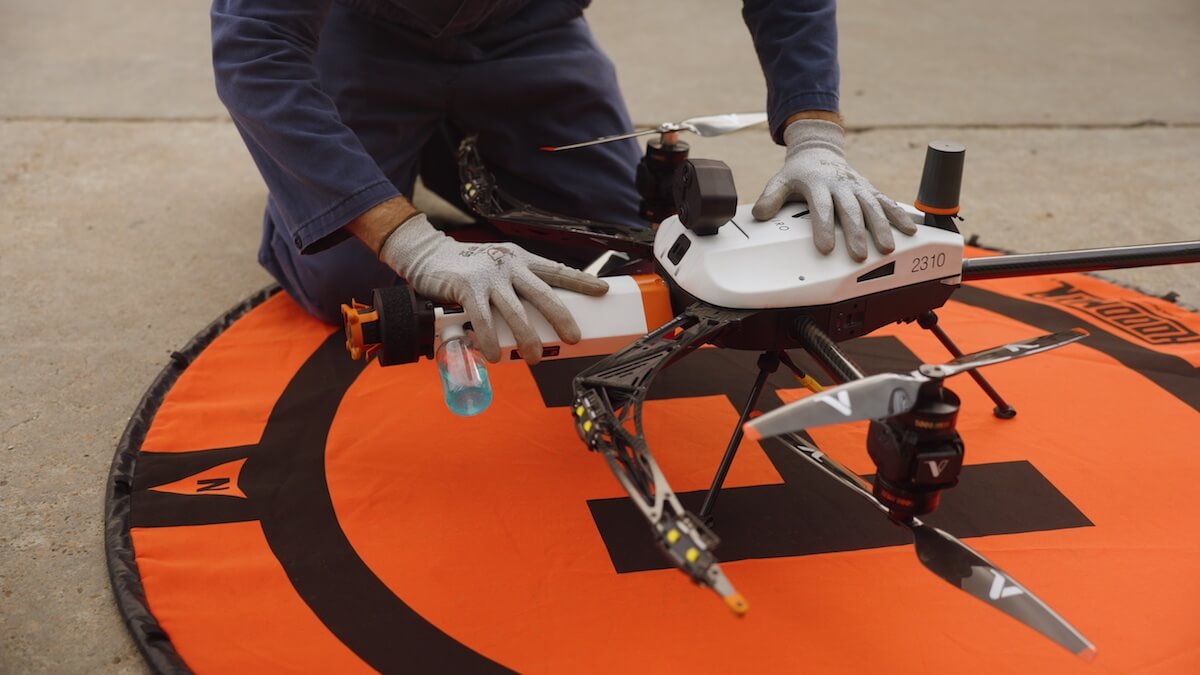Pushing the Limits: Radiation Testing at a Nuclear Energy Site
Can a drone function in extreme radiation environments? That’s exactly what the client set out to discover. In a pioneering test, our inspection drone was subjected to radiation levels of up to 10,000 R/h to determine its viability for a high-risk nuclear decommissioning operation.
Project Background: The Calcine Retrieval Challenge
The client’s Calcine Retrieval Project (CRP) is tasked with safely removing several hundred cubic meters of calcine — a highly radioactive byproduct of spent nuclear fuel — that has been stored underground for over six decades.
The extraction method involves drilled access points, welded ports, and pneumatic systems. Before executing the plan, however, the team required a detailed 3D scan of the vault interior to identify obstructions like beams, conduits, and ventilation lines.
Birdseye’s indoor inspection drone was selected for the job due to its capabilities in confined space navigation, radiation-hardened design, and LiDAR-powered 3D mapping. Yet, one vital question remained:
Could it withstand the vault’s intense radiation long enough to complete the mission?
Radiation Testing: Objectives and Approach
The client and its engineering team simulated vault-like radiation conditions using a 450 keV X-ray generator, enabling them to test the drone’s resilience and operational stability.
Testing Objectives:
- Prove operational capacity in radiation fields of 1,000 R/h
- Ensure system integrity after a total absorbed dose of 1,000 R
Testing Procedure:
- Multiple test flights were conducted in controlled radiation zones.
- Dosimetry instruments were mounted to track cumulative exposure.
- All onboard components — flight control, camera, LiDAR, gimbal, lighting, transmitter — were monitored live.
Test Results: Birdseye Surpassed All Expectations
- Operated reliably in fields up to 10,000 R/h — ten times the initial benchmark
- Remained fully functional after absorbing approximately 4,000 R — four times the target threshold
- Completed 19 test flights under varying radiation intensities
- All core systems — LiDAR, camera, gimbal, lights, and transmitter — remained fully operational
To contextualize: 4,000 R is nearly 800× the annual radiation exposure limit for human workers under regulatory standards.
What This Means for Nuclear Inspections
These successful trials underscore the Elios 3’s potential as a go-to solution for high-radiation inspections in nuclear facilities, radioactive waste storage, and decommissioning sites.
The drone’s resilience enables safe, high-resolution data collection in hazardous environments that are otherwise inaccessible to humans.
This Capability Unlocks:
- Minimized risk to personnel
- Faster, more efficient inspection cycles
- Detailed 3D mapping from dangerous or restricted zones



